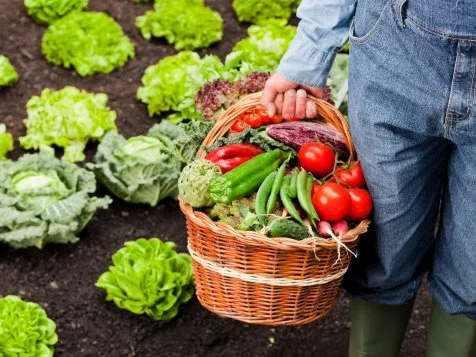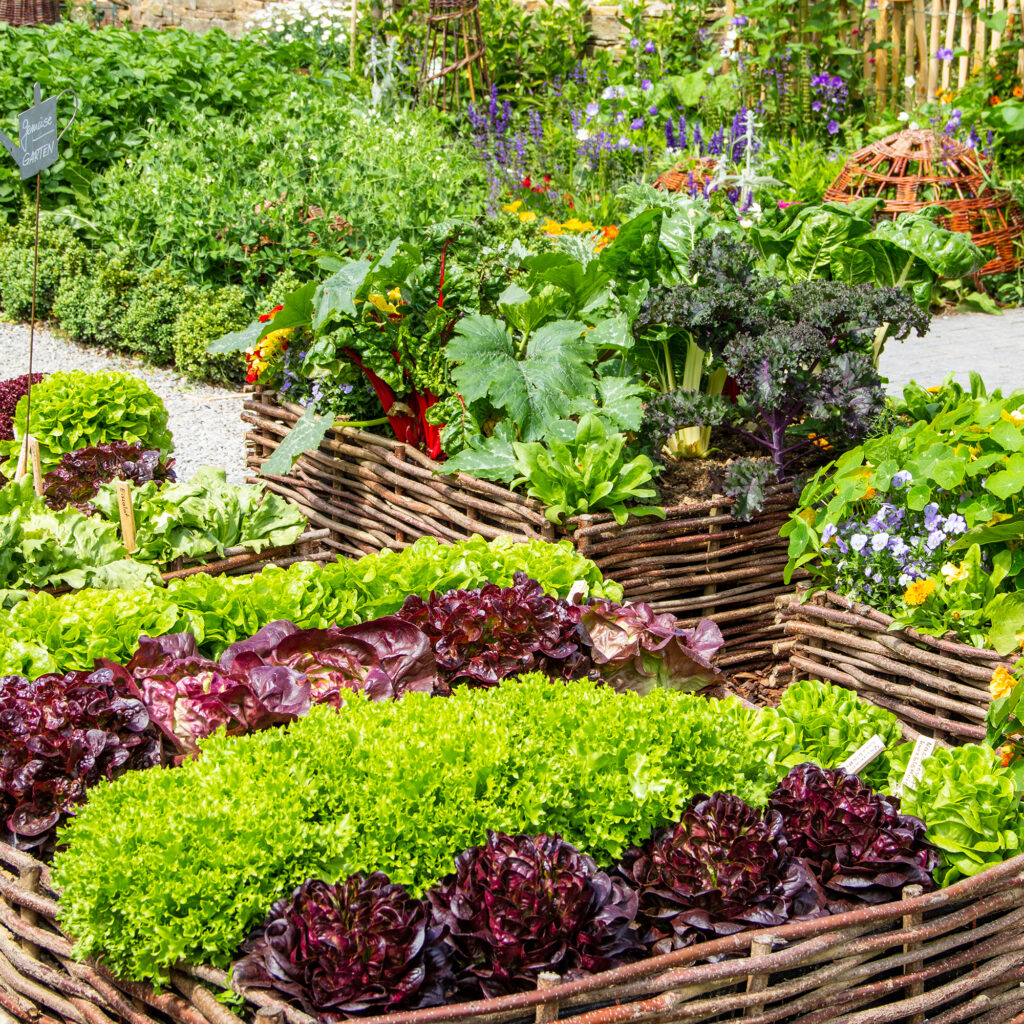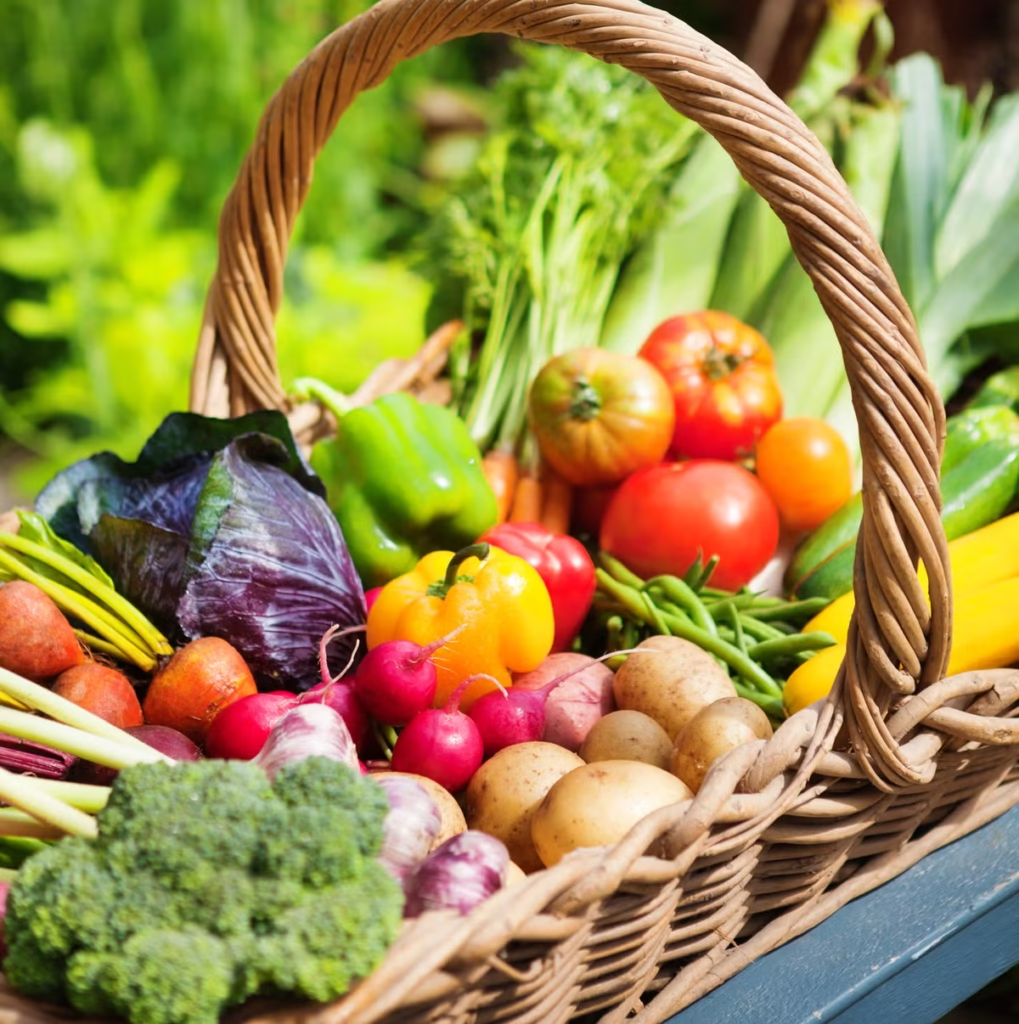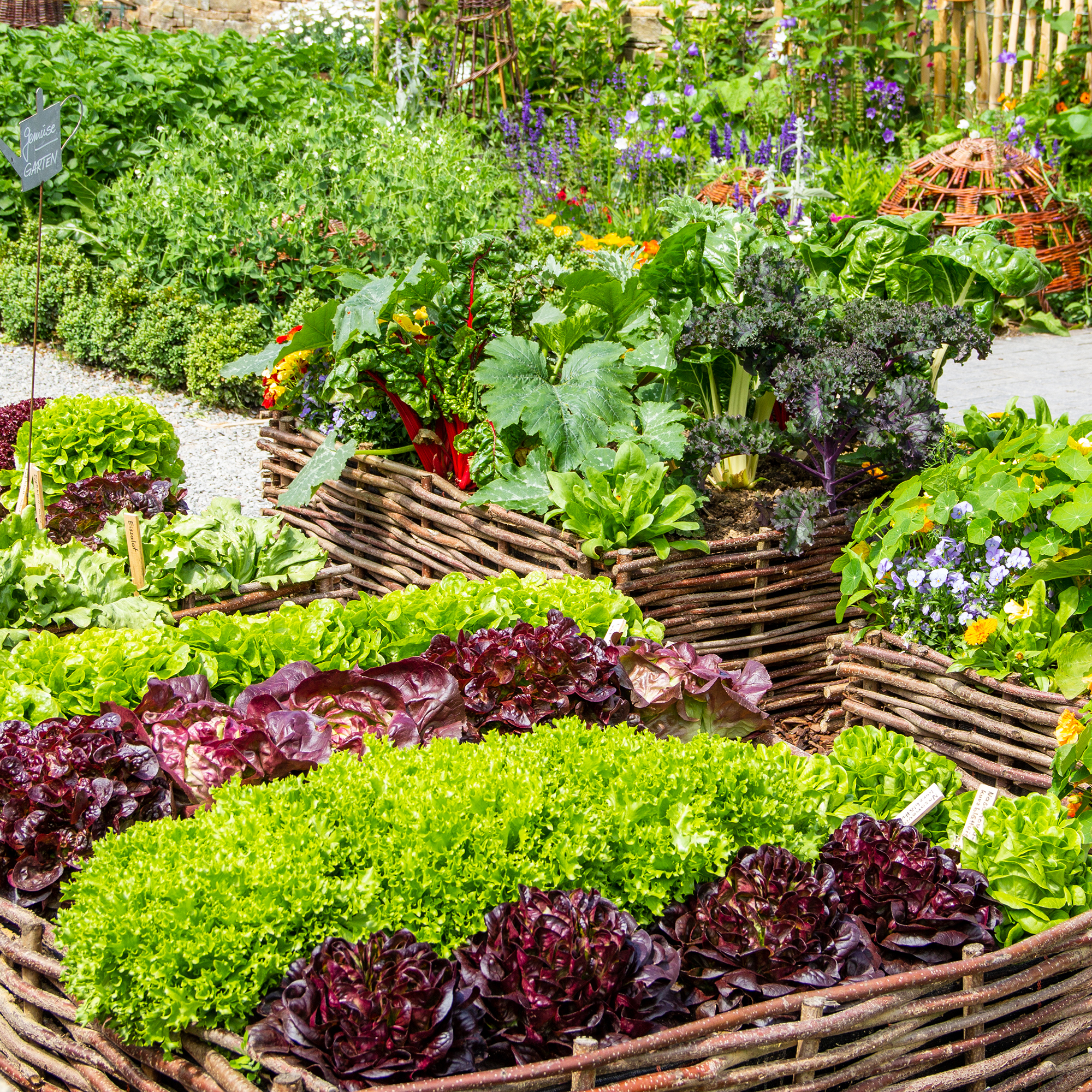There’s something deeply satisfying about growing your own food and transforming it into delicious, wholesome meals. The garden-to-table movement celebrates the joy of cultivating fresh produce and using it to create flavorful dishes that highlight the fruits of your labor. Whether you’re tending a small backyard plot or a few pots on your balcony, your homegrown vegetables, herbs, and fruits can elevate everyday meals into something extraordinary. In this article, we’ll explore ten garden-to-table recipes that showcase the vibrant flavors of fresh, homegrown produce. Each recipe is designed to be approachable, delicious, and perfect for home gardeners looking to make the most of their harvest.
1. Heirloom Tomato Caprese Salad
Ingredients (Serves 4):
- 4-5 heirloom tomatoes (grown in your garden, variety of colors)
- 1 cup fresh basil leaves (homegrown)
- 8 oz fresh mozzarella, sliced
- 3 tbsp extra-virgin olive oil
- 2 tbsp balsamic vinegar
- Sea salt and black pepper to taste
Instructions:
- Slice your homegrown heirloom tomatoes into ¼-inch thick rounds.
- Arrange tomato slices, fresh mozzarella, and basil leaves on a platter, alternating for a colorful presentation.
- Drizzle with olive oil and balsamic vinegar.
- Sprinkle with sea salt and freshly ground black pepper.
- Serve immediately as a refreshing appetizer or side dish.
Why It’s Great for Gardeners:
Heirloom tomatoes are a gardener’s pride, offering vibrant colors and rich flavors. Pairing them with homegrown basil creates a classic Caprese salad that’s simple yet bursting with freshness. This recipe is perfect for summer when tomatoes and basil are at their peak.

2. Zucchini and Herb Fritters
Ingredients (Serves 4):
- 2 medium zucchinis (homegrown), grated
- 1 tsp salt
- ¼ cup fresh parsley (homegrown), chopped
- 2 tbsp fresh dill (homegrown), chopped
- 1 egg, beaten
- ½ cup all-purpose flour
- ¼ tsp baking powder
- ¼ cup grated Parmesan
- Olive oil for frying
Instructions:
- Place grated zucchini in a colander, sprinkle with salt, and let sit for 10 minutes. Squeeze out excess moisture.
- In a bowl, combine zucchini, parsley, dill, egg, flour, baking powder, and Parmesan. Mix until a batter forms.
- Heat olive oil in a skillet over medium heat. Drop spoonfuls of batter into the pan, flattening slightly.
- Cook for 2-3 minutes per side until golden brown. Drain on paper towels.
- Serve with a dollop of sour cream or yogurt.
Why It’s Great for Gardeners:
Zucchini plants are prolific producers, often leaving gardeners with an abundance of squash. This recipe transforms your zucchini harvest into crispy, flavorful fritters, with homegrown herbs adding a fresh twist.
3. Roasted Beet and Arugula Salad
Ingredients (Serves 4):
- 4 medium beets (homegrown), roasted and peeled
- 4 cups arugula (homegrown)
- ½ cup walnuts, toasted
- ¼ cup crumbled goat cheese
- 3 tbsp olive oil
- 2 tbsp balsamic vinegar
- 1 tsp Dijon mustard
- Salt and pepper to taste
Instructions:
- Preheat oven to 400°F (200°C). Wrap beets in foil and roast for 45-60 minutes until tender. Let cool, peel, and cube.
- In a small bowl, whisk olive oil, balsamic vinegar, Dijon mustard, salt, and pepper to make the dressing.
- Toss arugula, beets, walnuts, and goat cheese in a large bowl.
- Drizzle with dressing and toss gently.
- Serve as a vibrant, nutrient-packed salad.
Why It’s Great for Gardeners:
Beets and arugula are easy to grow and thrive in cooler seasons. This salad combines their earthy and peppery flavors, making it a perfect way to showcase your garden’s bounty.
4. Fresh Herb and Pea Risotto
Ingredients (Serves 4):
- 1 cup fresh peas (homegrown)
- 1 cup Arborio rice
- 4 cups vegetable broth, warmed
- 1 small onion, diced
- 2 cloves garlic (homegrown), minced
- ¼ cup fresh parsley (homegrown), chopped
- 2 tbsp fresh mint (homegrown), chopped
- ¼ cup Parmesan cheese, grated
- 2 tbsp butter
- Salt and pepper to taste
Instructions:
- In a large pan, melt butter over medium heat. Sauté onion and garlic until soft.
- Add Arborio rice and stir for 1-2 minutes until lightly toasted.
- Gradually add warm broth, one ladle at a time, stirring until absorbed before adding more.
- When rice is creamy and al dente (about 18-20 minutes), stir in peas, parsley, mint, and Parmesan.
- Season with salt and pepper. Serve warm.
Why It’s Great for Gardeners:
Fresh peas and herbs like parsley and mint are garden staples. This creamy risotto highlights their delicate flavors, making it a comforting dish for any season.
5. Grilled Eggplant Parmesan
Ingredients (Serves 4):
- 2 medium eggplants (homegrown), sliced into ½-inch rounds
- 2 cups marinara sauce
- 1 cup mozzarella cheese, shredded
- ½ cup Parmesan cheese, grated
- ¼ cup fresh basil (homegrown), chopped
- Olive oil, salt, and pepper
Instructions:
- Preheat grill to medium-high. Brush eggplant slices with olive oil and season with salt and pepper.
- Grill eggplant for 3-4 minutes per side until tender and charred.
- In a baking dish, layer grilled eggplant, marinara sauce, mozzarella, and Parmesan.
- Bake at 375°F (190°C) for 15-20 minutes until cheese is bubbly.
- Garnish with fresh basil and serve.
Why It’s Great for Gardeners:
Eggplants are a warm-season favorite, and their smoky flavor shines when grilled. Paired with homegrown basil, this lighter take on eggplant Parmesan is a crowd-pleaser.
6. Kale and Potato Soup
Ingredients (Serves 6):
- 1 bunch kale (homegrown), stems removed and chopped
- 4 medium potatoes (homegrown), diced
- 1 onion, diced
- 2 cloves garlic (homegrown), minced
- 6 cups vegetable broth
- 1 can (15 oz) cannellini beans, drained
- 2 tbsp olive oil
- Salt and pepper to taste
Instructions:
- Heat olive oil in a large pot over medium heat. Sauté onion and garlic until fragrant.
- Add potatoes and broth. Bring to a boil, then simmer for 15 minutes until potatoes are tender.
- Stir in kale and cannellini beans. Cook for 5-7 minutes until kale is wilted.
- Season with salt and pepper. Serve hot with crusty bread.
Why It’s Great for Gardeners:
Kale and potatoes are hardy crops that thrive in many gardens. This hearty soup is perfect for cooler months, turning your harvest into a comforting meal.
7. Cucumber and Dill Yogurt Dip
Ingredients (Serves 4):
- 2 cucumbers (homegrown), grated
- 1 cup Greek yogurt
- 2 tbsp fresh dill (homegrown), chopped
- 1 clove garlic (homegrown), minced
- 1 tbsp lemon juice
- Salt and pepper to taste
Instructions:
- Place grated cucumber in a clean cloth and squeeze out excess water.
- In a bowl, combine cucumber, yogurt, dill, garlic, and lemon juice.
- Season with salt and pepper. Mix well.
- Chill for 30 minutes before serving with pita or veggies.
Why It’s Great for Gardeners:
Cucumbers grow abundantly in summer, and dill is a low-maintenance herb. This refreshing dip is perfect for snacking or as a party appetizer.
8. Stuffed Bell Peppers with Quinoa and Spinach
Ingredients (Serves 4):
- 4 bell peppers (homegrown), tops removed and seeded
- 1 cup quinoa, cooked
- 2 cups spinach (homegrown), chopped
- 1 cup diced tomatoes (homegrown)
- ½ cup feta cheese, crumbled
- 1 tsp cumin
- Olive oil, salt, and pepper
Instructions:
- Preheat oven to 375°F (190°C). Brush peppers with olive oil and place in a baking dish.
- In a bowl, mix quinoa, spinach, tomatoes, feta, cumin, salt, and pepper.
- Stuff peppers with the quinoa mixture.
- Cover with foil and bake for 30-35 minutes until peppers are tender.
- Serve warm.
Why It’s Great for Gardeners:
Bell peppers, spinach, and tomatoes are garden favorites. This recipe combines them into a healthy, flavorful dish that’s easy to prepare.
9. Carrot and Ginger Soup
Ingredients (Serves 4):
- 1 lb carrots (homegrown), peeled and chopped
- 1 tbsp fresh ginger (homegrown), grated
- 1 onion, diced
- 4 cups vegetable broth
- ½ cup coconut milk
- 2 tbsp olive oil
- Salt and pepper to taste
Instructions:
- Heat olive oil in a pot over medium heat. Sauté onion and ginger until fragrant.
- Add carrots and broth. Bring to a boil, then simmer for 20 minutes until carrots are soft.
- Blend the soup until smooth using an immersion blender.
- Stir in coconut milk, season with salt and pepper, and heat through.
- Serve with a sprinkle of fresh herbs.
Why It’s Great for Gardeners:
Carrots are a versatile crop, and ginger can be grown in warmer climates or pots. This vibrant soup is both comforting and nutritious.

10. Strawberry and Mint Sorbet
Ingredients (Serves 4):
- 2 cups strawberries (homegrown), hulled
- ¼ cup fresh mint leaves (homegrown)
- ½ cup sugar
- ½ cup water
- 1 tbsp lemon juice
Instructions:
- In a saucepan, combine sugar and water. Heat until sugar dissolves to make a simple syrup. Let cool.
- Blend strawberries, mint, lemon juice, and cooled syrup until smooth.
- Pour into a shallow dish and freeze for 4 hours, stirring every 30 minutes to break up ice crystals.
- Serve in chilled bowls.
Why It’s Great for Gardeners:
Strawberries and mint are easy to grow and perfect for a refreshing dessert. This sorbet is a sweet way to end a garden-to-table meal.
Tips for Garden-to-Table Success
- Plan Your Garden: Choose crops that align with your favorite recipes, like tomatoes, herbs, or leafy greens.
- Harvest at Peak Freshness: Pick produce in the morning when flavors and nutrients are most concentrated.
- Experiment with Varieties: Try heirloom or unique varieties to add diversity to your dishes.
- Preserve the Harvest: Freeze, can, or pickle extra produce to enjoy your garden’s bounty year-round.
These ten recipes celebrate the joy of growing and cooking your own food. From savory soups to refreshing desserts, your garden can be the source of countless delicious meals. Happy gardening and cooking!
FAQs About Garden-to-Table Recipes for Taste Trove
Below are frequently asked questions about creating delicious garden-to-table recipes using fresh homegrown produce, tailored for Taste Trove readers. These answers provide practical tips, link to relevant content on your website, and include external resources for further exploration.
1. What is the garden-to-table concept?
Answer:
The garden-to-table concept involves growing your own fruits, vegetables, and herbs and using them directly in your cooking to create fresh, flavorful meals. It emphasizes sustainability, freshness, and the joy of eating what you grow. At Taste Trove, we celebrate this approach with recipes like our Heirloom Tomato Caprese Salad that showcase homegrown ingredients.
External Link: Learn more about sustainable gardening at The Old Farmer’s Almanac.
2. What are the best crops for beginners to grow for garden-to-table recipes?
Answer:
Beginners should start with easy-to-grow crops like tomatoes, zucchini, basil, lettuce, and cucumbers. These plants are low-maintenance and versatile for dishes like our Zucchini and Herb Fritters or Cucumber and Dill Yogurt Dip. They thrive in most climates and yield abundant harvests.
External Link: Check out Gardening Know How for beginner-friendly gardening tips.
3. How do I plan a garden to support my cooking?
Answer:
Plan your garden based on the recipes you love. For example, if you enjoy Italian dishes, grow tomatoes, basil, and eggplants for recipes like our Grilled Eggplant Parmesan. Consider your climate, season, and space—raised beds or containers work well for small areas. Rotate crops annually to maintain soil health.
Internal Link: Explore our Guide to Seasonal Gardening for crop planning tips.
4. How can I make the most of a small garden space for cooking?
Answer:
Maximize small spaces with vertical gardening, container planting, or companion planting. Herbs like parsley and mint, used in our Fresh Herb and Pea Risotto, grow well in pots. Compact crops like cherry tomatoes or spinach are also great choices. Use trellises for vining plants like peas or cucumbers to save space.
External Link: Discover small-space gardening ideas at Better Homes & Gardens.
5. When is the best time to harvest produce for recipes?
Answer:
Harvest in the early morning when plants are hydrated, and flavors are most concentrated. For example, pick tomatoes and basil for our Heirloom Tomato Caprese Salad when they’re fully ripe for peak flavor. Leafy greens like kale for our Kale and Potato Soup are best harvested young to avoid bitterness.
Internal Link: Learn more in our Harvesting Tips for Fresh Produce.
6. How can I store or preserve my garden harvest for later use?
Answer:
Preserve your harvest by freezing, canning, or pickling. For instance, extra tomatoes can be canned for sauces used in our Grilled Eggplant Parmesan. Freeze strawberries for our Strawberry and Mint Sorbet or dry herbs like dill for year-round use. Proper storage extends the life of your produce.
External Link: Find preservation techniques at The National Center for Home Food Preservation.
7. What tools do I need to start a garden-to-table kitchen?
Answer:
Basic gardening tools include a trowel, pruning shears, gloves, and a watering can. For cooking, invest in a good chef’s knife, cutting board, and blender for recipes like our Carrot and Ginger Soup. A compost bin can also help recycle kitchen scraps for your garden, creating a sustainable cycle.
Internal Link: Check out our Essential Kitchen Tools for Home Cooks.
8. Can I grow ingredients year-round for garden-to-table recipes?
Answer:
Yes, with planning! Use cold frames or greenhouses for winter crops like kale or spinach, perfect for our Kale and Potato Soup. In warmer months, grow tomatoes, zucchini, and herbs. Succession planting ensures a continuous supply of ingredients.
External Link: Learn about year-round gardening at Mother Earth News.

9. How do I avoid common gardening mistakes that affect my recipes?
Answer:
Common mistakes include overwatering, poor soil preparation, or neglecting pests. Test soil before planting crops like beets for our Roasted Beet and Arugula Salad. Use organic pest control, like neem oil, to protect plants without affecting food safety. Regular weeding and mulching also help.
Internal Link: Read our Common Gardening Mistakes to Avoid.
10. How do I make my garden-to-table meals more flavorful?
Answer:
Use fresh, high-quality ingredients and experiment with homegrown herbs like basil, mint, or dill, featured in our Cucumber and Dill Yogurt Dip. Combine textures and flavors, like creamy feta with crisp bell peppers in our Stuffed Bell Peppers. Taste as you cook to adjust seasonings.
External Link: Get flavor inspiration from Bon Appétit.
Have more questions about garden-to-table cooking? Explore Taste Trove’s Recipe Collection for more inspiration or contact us at support@tastetrove.com for personalized advice!
Related FAQs on Garden-to-Table Recipes for Fresh Homegrown Produce
Garden-to-table cooking emphasizes using freshly harvested produce from your own garden or local sources to create nutritious, flavorful meals. Based on common questions from gardening and cooking resources, here are some frequently asked questions (FAQs) and answers to help you get started or troubleshoot your approach:
- What is the garden-to-table movement, and why should I try it?
Garden-to-table (or farm-to-table) is a cooking philosophy that prioritizes sourcing ingredients directly from your backyard garden or local farms, rather than relying on store-bought produce shipped from afar. It supports healthier eating because fresh, locally grown veggies retain more nutrients and flavor since they’re consumed soon after harvest, without long transport times or freezing. It also reduces your carbon footprint and encourages sustainable practices. For beginners, start small by growing easy crops like tomatoes, herbs, or zucchini to experience the difference in taste. - How do I plan recipes around what I harvest from my garden?
Unlike grocery shopping where you pick recipes first, garden-to-table requires adapting to what’s ready in your harvest. Prioritize using ripe produce immediately to avoid waste—check your garden daily and build meals around it. For example, if you have an abundance of tomatoes, make a simple sauce or salad. Organize recipes by season or vegetable type (e.g., summer squash recipes for zucchini overload). Set realistic goals, like using only garden veggies for one meal a week, and keep a recipe binder categorized by produce to make planning easier. - What are some beginner-friendly tips for cooking with homegrown produce?
Start with simple recipes that let the natural flavors shine—think salads, stir-fries, or roasted veggies with minimal seasoning. Use fresh herbs from your garden for added taste without complexity. Essential tools include sharp knives for chopping and basic containers for storage. For preservation, learn easy methods like freezing (e.g., blanch and freeze green beans) or quick pickling to extend your harvest. Always wash produce thoroughly, and experiment with companion planting in your garden to naturally deter pests, ensuring cleaner yields. - How can I preserve excess homegrown produce for later recipes?
Overabundant harvests like tomatoes or cucumbers can be preserved through canning, freezing, drying, or pickling to enjoy garden-fresh flavors year-round. For canning, follow safe recipes for jams or sauces; freezing works well for berries or chopped veggies; drying is great for herbs. Aim to process produce within a day or two of harvest for best quality. This not only reduces waste but allows you to incorporate homegrown ingredients into off-season dishes like soups or stews. - What if my garden produce doesn’t turn out as expected, or I have picky eaters?
Not every crop will be perfect—factors like weather or soil can affect yield, so grow a variety of veggies to hedge your bets, including easy ones like lettuce or peppers. For picky eaters (especially kids), disguise veggies in familiar forms like fritters, smoothies, or hidden in sauces. Kid-friendly options include oven-baked zucchini cakes or crunchy cucumber salads. Remember, the goal is enjoyment, so mix garden produce with store-bought staples if needed, and involve family in harvesting to build excitement.
